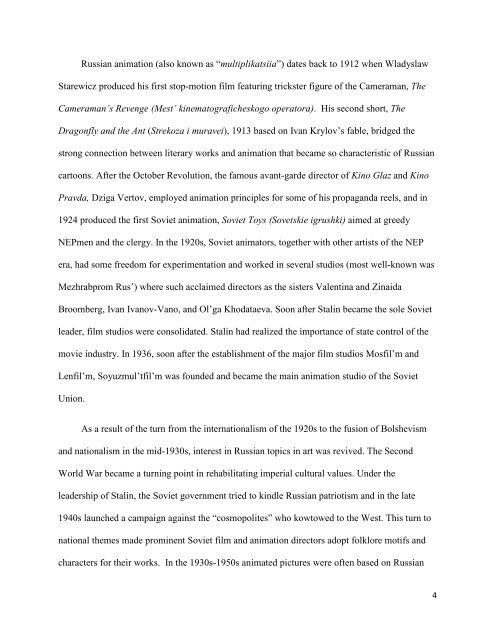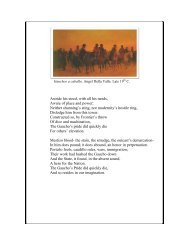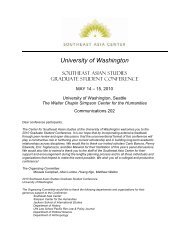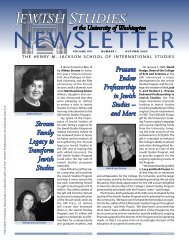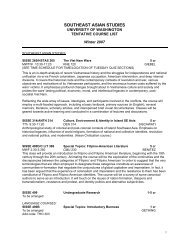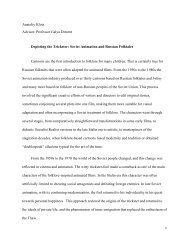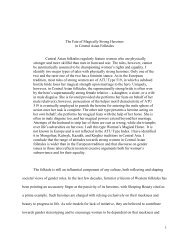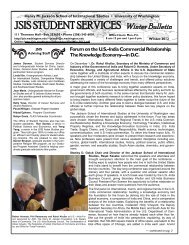Anatoliy Klots Advisor: Professor Galya Diment Depicting the Trickster
Anatoliy Klots Advisor: Professor Galya Diment Depicting the Trickster
Anatoliy Klots Advisor: Professor Galya Diment Depicting the Trickster
You also want an ePaper? Increase the reach of your titles
YUMPU automatically turns print PDFs into web optimized ePapers that Google loves.
Russian animation (also known as “multiplikatsiia”) dates back to 1912 when Wladyslaw<br />
Starewicz produced his first stop-motion film featuring trickster figure of <strong>the</strong> Cameraman, The<br />
Cameraman’s Revenge (Mest’ kinematograficheskogo operatora). His second short, The<br />
Dragonfly and <strong>the</strong> Ant (Strekoza i muravei), 1913 based on Ivan Krylov’s fable, bridged <strong>the</strong><br />
strong connection between literary works and animation that became so characteristic of Russian<br />
cartoons. After <strong>the</strong> October Revolution, <strong>the</strong> famous avant-garde director of Kino Glaz and Kino<br />
Pravda, Dziga Vertov, employed animation principles for some of his propaganda reels, and in<br />
1924 produced <strong>the</strong> first Soviet animation, Soviet Toys (Sovetskie igrushki) aimed at greedy<br />
NEPmen and <strong>the</strong> clergy. In <strong>the</strong> 1920s, Soviet animators, toge<strong>the</strong>r with o<strong>the</strong>r artists of <strong>the</strong> NEP<br />
era, had some freedom for experimentation and worked in several studios (most well-known was<br />
Mezhrabprom Rus’) where such acclaimed directors as <strong>the</strong> sisters Valentina and Zinaida<br />
Broomberg, Ivan Ivanov-Vano, and Ol’ga Khodataeva. Soon after Stalin became <strong>the</strong> sole Soviet<br />
leader, film studios were consolidated. Stalin had realized <strong>the</strong> importance of state control of <strong>the</strong><br />
movie industry. In 1936, soon after <strong>the</strong> establishment of <strong>the</strong> major film studios Mosfil’m and<br />
Lenfil’m, Soyuzmul’tfil’m was founded and became <strong>the</strong> main animation studio of <strong>the</strong> Soviet<br />
Union.<br />
As a result of <strong>the</strong> turn from <strong>the</strong> internationalism of <strong>the</strong> 1920s to <strong>the</strong> fusion of Bolshevism<br />
and nationalism in <strong>the</strong> mid-1930s, interest in Russian topics in art was revived. The Second<br />
World War became a turning point in rehabilitating imperial cultural values. Under <strong>the</strong><br />
leadership of Stalin, <strong>the</strong> Soviet government tried to kindle Russian patriotism and in <strong>the</strong> late<br />
1940s launched a campaign against <strong>the</strong> “cosmopolites” who kowtowed to <strong>the</strong> West. This turn to<br />
national <strong>the</strong>mes made prominent Soviet film and animation directors adopt folklore motifs and<br />
characters for <strong>the</strong>ir works. In <strong>the</strong> 1930s-1950s animated pictures were often based on Russian<br />
4


